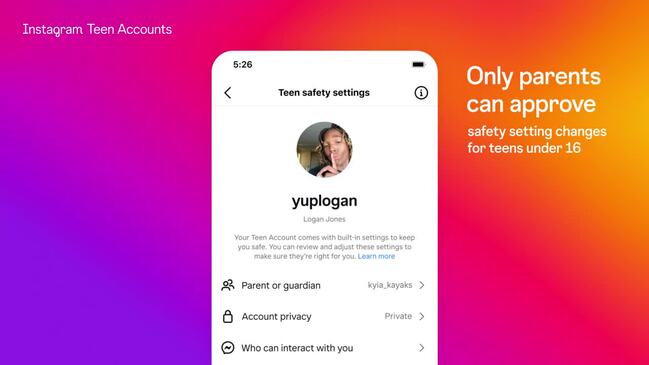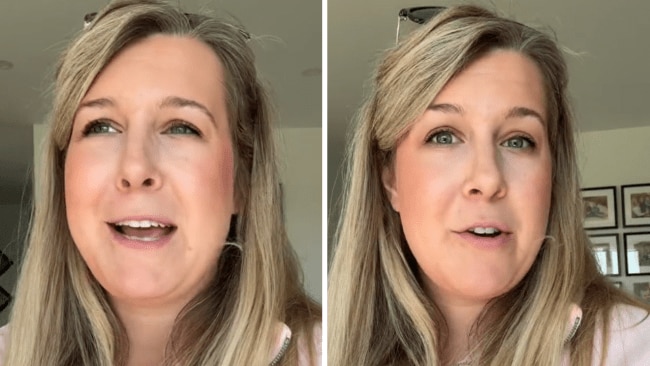Social media platform's big move to keep your teenagers safer online
“We tried to be very thoughtful about where we went. So, for instance, parents can see who a teen messages with, but they cannot see the content."

Family Life
Don't miss out on the headlines from Family Life. Followed categories will be added to My News.
Instagram has announced one of the most significant changes to its platform in years, restricting the content seen by young users and the ability for strangers to make contact with them.
And despite the timing, the tech giant insists its major global rollout has nothing to do with Australia’s planned crackdown on social media platforms.
The photo- and video-sharing app, owned by Meta, has just announced the introduction of Instagram Teen Accounts for all of its users aged 13 to 17.
For more stories like this, visit news.com.au.
Anyone in that group will soon transition automatically to a new controlled environment that’s designed to prevent unwanted contact and inappropriate material, while offering parents the tools to manage screen time.
Other features include making teens’ accounts private by default, limiting tags and mentions to those they already follow, and the most restrictive version of Instagram’s anti-bullying feature.
Strict controls will filter out content deemed to be sensitive, such as images and videos depicting violence and even cosmetic procedures.
RELATED: We all know the kids will find a way for their social media fix
"It's going out now because it's ready now"
The news comes just weeks after Prime Minister Anthony Albanese committed to social media age restrictions, with the planned minimum expected to be 16.
Instagram chief executive Adam Mosseri said the development of Instagram Teen Accounts began more than a year ago.
As well as technical work required, the project involved extensive research drawing on the views and experiences of parents and young people, plus the insights of experts.
“It’s going out now because it’s ready now,” he said.
“We’re obviously managing compliance requirements with different regulators around the world … and these changes will address some of those concerns and won’t address others.
“They weren’t designed with regulators or policymakers in mind. We’ve tried wherever possible to find the overlap between what parents want and what teens want, and lean into that.”
And while an estimated 14 million Australians use the platform, Instagram boasts some 200 million users worldwide, he pointed out.
Mr Mosseri added that Australia had been “more antagonistic” than any other region and described the operating environment for Instagram as “complicated”.
“For us, it’s parents first. What do they care about? They know best, right? A parent will know better than any private company, any lawmaker, any regulator, what’s best for their teen,” he said.
“I think the regulatory environment, the litigation environment, it’ll ebb and flow. If we overreact to that, we’re going to miss the forest for the trees. What matters is how parents feel and how teens feel about the experience.”
RELATED: ‘Enough is enough’: Social media ban for kids under 16 rolling out this year
"I have to assume it's good for our business over the long run"
He admitted some teenagers may not like the version of Instagram they soon see.
“We are definitely going to see a loss of teen engagement and teen growth,” Mr Mosseri said.
“The number of teens that use Instagram relative to where we would have been otherwise, that is going to [drop]. The question is how much, not if.
“But that said, I have to believe that a world in which we earn more trust from parents who ultimately get to decide if their kids have a device or can grab the device and install something … where they have that level of control, I have to assume it’s good for our business over the long run.
Introducing our new podcast: Mum Club! Listen and subscribe wherever you get your podcasts so you never miss an episode.
“It’s going to be difficult and it’s going to hurt over the short run, but we’re going in knowing that. And our best is that we’ll feel good about it in five years. We’ll see how it plays out. I’m hopeful, but we’ll see.”
Some of the feedback during research found parents didn’t want a system that required them to be overly tech-savvy or across absolutely every feature.
That led to the model announced today – sweeping default settings as well as the ability for parents to go deeper.
“They can go in and shape the experience, knowing what’s best for their teen, but the defaults are going to be on all for teens,” he said.
RELATED: Drew Barrymore gave her 11yo a phone and then took it away 3 months later
"You can't just make another account on the same device"
Teens wanting to ditch any measures will need the permission of their parents, whose accounts are linked to theirs.
When users are 16 and 17, they get some modest level of autonomy back, but will still exist within the Teen ecosystem until they are of age.
A range of existing measures will hopefully dissuade young people from looking for an escape, he said, and Instagram is developing additional guardrails.
“You can’t just change your birthday without [formally] verifying your age. You can’t just make another account on the same device. Parents can report accounts for lying about their age.
“And we’re working on some more.
“But we’ve tried to find a decent balance because the more restrictive the evidence is, the stronger the theoretical incentive for a teen to try to work around the restrictions.
“We tried to be very thoughtful about where we went. So, for instance, parents can see who a teen messages with, but they cannot see the content. That’s a good balance of two equities.”
RELATED: How is access to social media really affecting our kids?
"We're going to do everything we can"
In an ideal world, he said the likes of Apple and Google, who produce the iOS and Android platforms respectively, would take a more active role in age verification.
“The single easiest thing that could happen that could massively improve age understanding across the entire industry … [and] if Apple and Google allowed apps to request birthdays in a privacy safe way” Mr Mosseri said.
“I don’t know if this will ever happen. We have to assume it will never happen. I’m not trying to pass responsibility. We’re going to do everything we can.
“But, as an app developer, I can ask a phone for access to your microphone, your camera and to where in the world you are right now within 10 feet, which are much more sensitive pieces of information than just the date you were born.
“I should be able to ask for a day you were born because parents often put that in when they buy the device.
“It’s a hard problem to solve, but that said, we have a responsibility to do all we can. And we’re getting pretty sophisticated. I think we are either the best, or close to the best, at understanding age with a combination of collection, verification and prediction.”
From today, a phased rollout begins and will ramp up over coming weeks.
More Coverage
Originally published as Social media platform's big move to keep your teenagers safer online





